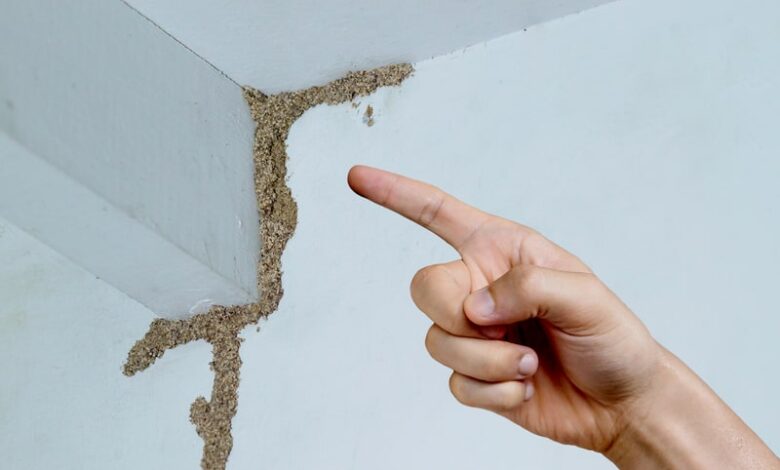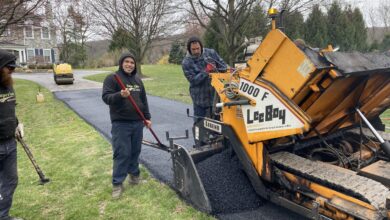5 Subtle Signs of Termite Infestation in Your Home

Termites are tiny insects that can cause significant damage to your home. They feed on wood, paper, and other cellulose materials, which can weaken the structure of your house. Termites are known as the silent destroyer because they can go unnoticed for a long time, causing significant damage before being detected. Unfortunately, by that point, the cost of repairs can be astronomical. It’s important to be proactive in identifying termite infestations in your home before they cause irreparable harm.
In this article, we’ll explore five of the most common signs of termite activity in your home. By learning these signs, you can take action early and avoid the headache and expense of dealing with a termite problem down the line. We’ll also discuss prevention and control measures for termite infestations, including DIY methods and professional services.
Subtle Signs of Termite Infestation
Termites can be difficult to detect, especially in the early stages of an infestation. However, there are some subtle signs to look out for that can indicate an infestation. Here are five of the most common signs of termite activity in your home:
Soft Wood
Termites feed on wood, so one of the first signs of an infestation is soft or hollow wood. If you tap on a wooden surface and it sounds hollow, it could be a sign that termites have been eating away at the wood from the inside. You may also notice small holes or tunnels in wooden surfaces, which are created by termites as they burrow through the wood.
Mud Tubes
Termites build mud tubes to travel from their nest to their food source. These tubes are made of dirt, wood, and saliva and are usually found along the foundation of a house or other wooden structures. If you notice mud tubes around your home, it’s a sign that termites are present and active.
Discarded Wings
When termites swarm, they shed their wings. If you find discarded wings around your home, it’s a sign that termites have been swarming and may have established a colony nearby. Look for these wings near windows, doors, and other entry points to your home.
Termite Droppings
Termite droppings, also known as frass, look like small pellets or grains of sand. If you notice these droppings around your home, it’s a sign that termites are present and active. You may find them near wooden surfaces or in areas where termites have been burrowing.
Noises in the Walls
Termites are not known for making noise, but if you hear clicking or rustling sounds in your walls, it could be a sign of a termite infestation. These noises are made by worker termites as they burrow through the wood.
The Dangers of Ignoring Termite Infestation
Ignoring a termite infestation can lead to significant damage to your home. Termites can weaken the structure of your house, making it vulnerable to collapse. They can also cause electrical problems by chewing through wires and cables. In addition, termites can cause damage to furniture, books, and other items made of wood or paper. The longer you wait to address a termite infestation, the more damage they can cause, and the more expensive repairs will be.
Prevention and Control Measures for Termite Infestation
Prevention is the key to avoiding a termite infestation. Here are some steps you can take to prevent termites from entering your home:
Remove Food Sources
Termites feed on wood, so removing wood debris from around your home can help prevent them from establishing a colony. Keep firewood, lumber, and other wooden items away from your home, and remove any fallen trees or branches from your yard.
Seal Entry Points
Termites can enter your home through small cracks and gaps in your foundation, walls, and roof. Seal these entry points with caulk or another sealant to prevent termites from getting in.
Use Termite-Resistant Materials
When building or renovating your home, use termite-resistant materials like concrete, steel, and treated wood. These materials are less attractive to termites and can help prevent an infestation.
Maintain Your Home
Regular maintenance can help prevent a termite infestation. Keep your gutters clean, repair any leaks or water damage, and make sure your home is properly ventilated to prevent moisture buildup.
DIY Termite Control Methods
If you suspect you have a termite infestation, there are some DIY methods you can try to control the problem. Here are a few:
Cardboard Traps
Termites are attracted to cardboard, so placing cardboard traps around your home can help lure them out. Place the traps near areas where you suspect termite activity and check them regularly.
Boric Acid
Boric acid is a natural insecticide that can be effective against termites. Mix boric acid with water and spray it on wooden surfaces to kill termites on contact.
Nematodes
Nematodes are tiny worms that feed on termites. You can purchase nematodes online or at a garden center and release them around your home to help control a termite infestation.
Professional Termite Control Services
If you have a severe termite infestation or DIY methods are not effective, it’s time to call in the professionals. A pest control company can assess the extent of the infestation and recommend a treatment plan. Here are some common professional termite control methods:
Liquid Termiticides
Liquid termiticides are applied to the soil around your home to create a barrier that termites cannot cross. This treatment can be effective for preventing future infestations.
Bait Stations
Bait stations are placed around your home to lure termites in. The bait contains a slow-acting poison that the termites will carry back to their colony, eventually killing the entire colony.
Fumigation
Fumigation is a last resort for severe termite infestations. Your home is tented, and a gas is pumped in to kill all the termites. This treatment is expensive and requires you to vacate your home for several days.
Termite Control Costs – DIY vs. Professional Services
The cost of termite control can vary depending on the severity of the infestation and the method of treatment. DIY methods can be relatively inexpensive, but they may not be effective for severe infestations. Professional termite control services can be more expensive, but they are more likely to be effective at eliminating the problem. It’s important to weigh the costs and benefits of each option before deciding on a treatment plan.
Conclusion – The Importance of Early Detection and Prevention
Termites are the silent destroyers of homes. They can cause significant damage before being detected, so it’s important to be proactive in identifying termite infestations in your home. By learning the subtle signs of termite activity and taking steps to prevent infestations, you can protect your home from the costly damage caused by these tiny insects. If you suspect you have a termite infestation, don’t wait to take action. Contact a pest control professional to assess the problem and recommend a treatment plan.



